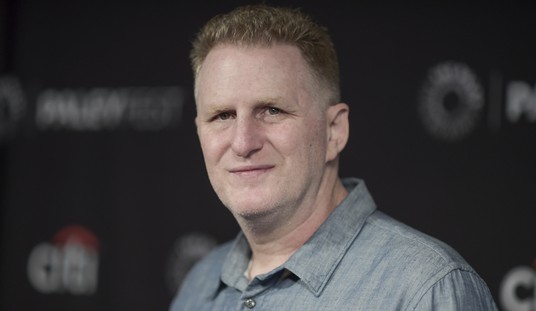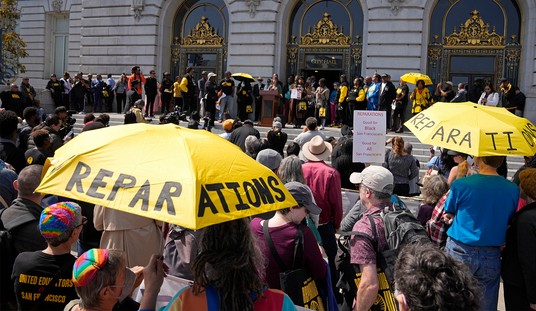I’ve always made it a point to never respond to Internet chain letters and the like, but I’m willing to make an exception to this one. “Dirty Harry” lists his favorite movies from A to Z:
Glenn Kenny at Some Came Running invites me to my first meme. To be honest, I didn’t even know what a meme was until now. Actually, I still don’t know, but any chance to willy-nilly list a bunch of movies is not something I have the discipline to turn down. In turn, I’m supposed to tag five movie bloggers and ask them to do the same. And if I’m able to think of five movie bloggers who won’t respond with a “F**K OFF RIGHT WING FASCIST!! — I’ll do just that.
So here, off the top of my head, are my a to z’s with a short explanation.
* * *
I’m tagging: Kyle Smith- Christian Toto – Robert Avrech – Ed Driscoll – Movie Bob – Sorry guys.
Apology accepted, Captain Needa…
Annie Hall: Woody’s finest moment, with a lot of help from his collaborators, including Diane Keaton (of course) Tony Roberts, co-screenwriter Marshall Brickman and editor Ralph Rosenblum.
Apocalypse Now Redux: One of the greatest war movies ever made, and a triumph for Coppola and cinematographer Vittorio Storaro. (And don’t miss Hearts of Darkness, which explains how utterly insane the film shoot was.)
Barry Lyndon: Rightfully considered since its debut one of the most beautifully photographed movies ever made, it’s also worth studying for its structure and use of narration.
Blade Runner: Breakthrough all-enveloping production design and special effects; without which, this would be just another Charlton Heston mid-1970s eco-doomsday movie.
Blow-Up: Antonioni transplants Hitchcock to Swinging London for a film that’s been endlessly referenced, from Haskell Wexler’s Medium Cool to Mike Myers’ Austin Powers movies.
Casablanca/Citizen Kane: The classic studio system pictures of the first half of the 1940s; both relied on great directors getting the most from their respective studio craftsmen.
Dr. Strangelove: Beneath the great sets, blackout comedy, and Swiftian satire, is an incredibly tightly written and structured script.
Empire Strikes Back: The Star Wars cast and crew, led by a director who can get his cast to act.
From Russia With Love: Arguably the best of the Bonds.
Godfather I, Godfather II: ‘Nuff said.
The Hustler: Pool as a metaphor for life.
Interiors: One of Woody’s first attempts at completely alienating his audience; he would succeed beyond his wildest dreams just a few years later with Stardust Memories.
Jaws: Hollywood invents the summer blockbuster, by way of Steven Spielberg’s Hitchcock at sea direction.
JFK: As history it’s a sickly perverted joke (the film posits that everyone who lived in the United States in 1963, from the mafia to LBJ, except Oswald was in on the assassination), but as a cold war paranoid thriller, it’s a helluva ride.
King Kong: Industrial light and magic, 1933 edition.
Lawrence of Arabia: The thinking man’s epic; along with 2001’s famous bone toss, Lawrence contains one of the greatest cuts in cinema history, when Peter O’Toole extinguishes his match.
M*A*S*H: Altman thought he was making an anti-war film; instead he released a hilarious anti-idiotarian movie.
The Manchurian Candidate: The original of course–a masterpiece of paranoid style.
1984: The power of Orwell is that he can inspire a cast of leftwing actors and technicians to create such a potent meditation on the slippery slope of socialism.
North By Northwest: A classic from its debut; it’s now a time capsule look at life at the top near the end of the Eisenhower-era; so many of its institutions, Hitchcock himself, Cary Grant, the 20th Century Limited, would be shoved into the dustbin of history by the destructive force of the 1960s culture.
North Dallas Forty: Still the definitive pro football movie, even if its budget limitations show more on each successive viewing.
On Her Majesty’s Secret Service: If this had starred Sean Connery it would have been the ultimate Bond movie; even without him, you can actually watch Lazenby grow into the part as the film goes on. And who else (spoiler alert!) could Bond marry but Diana Rigg? (As one critic said afterward to the producer, you killed the wrong person Cubby: you should have killed Bond and kept the girl!)
Paths of Glory: The film that put Kubrick on the map, it’s actually three genres in one: the war movie, the courtroom movie, and an anti-capital punishment film, all shot with incredibly fluid camera moves.
Patton: Hollywood at its peak, only minutes before the lights went out in the 1970s.
Quadrophenia: It’s hard to believe one of The Who’s hardest rocking albums outlines the internal life of such a nerd of a character. That the film makes you care about him demonstrates that actor Phil Daniels and director Franc Roddam have succeeded in their roles. The film is also a reminder that American pop culture was so powerful in the 1950s that all of England’s youth in the pre-hippie ’60s would wrap itself around it, whether it’s the Ivy League suits and Motown songs of the Mods, or the Brando biker culture of the Rockers.
Rope: A reminder that as a master technician, Hitchcock was surprisingly willing to experiment, often with excellent results. Hitch’s first color movie; shot in multiple continuous takes; one of the definitive filmed plays.
The Sweet Smell of Success: The cat’s in the bag, and the bag’s in the river.
Star Wars: The movie that saved 1970s Hollywood.
2001: A Space Odyssey: The greatest science fiction film ever made, one that would inspire obsessive film buffs galore to raid their college libraries in search of every book on the film and Kubrick they could get their hands on to discover what the film was about and how it was made. (What–didn’t you do that too?)
Der Untergang: AKA Downfall: a meditation on extraordinary popular delusions and the madness of National Socialism.
Vertigo: Hitchcock’s dark masterpiece; like North By Northwest, it’s also a time capsule of the day-to-day style and mores of its era.
Wall Street: Intended to be a potboiler on the evils of capitalism, but ironically deeply embraced by its intended target: I never met a person in the financial industry who couldn’t quote whole paragraphs of dialogue from the film. Blue Horseshoe loves Anacot Steel.
X-15: Narration by Jimmy Stewart, Charles Bronson as a test pilot, Mary Tyler Moore as a pilot’s wife, James Gregory as Mission Control–a fun early 1960s B-movie.
Young Frankenstein: Mel at his peak.
Zelig: One of the Woody’s most impressive technical achievements. Flannery O’Conner once advised readers to “Push back against the age as hard as it pushes against you”; Woody’s endlessly malleable titular character comically demonstrates the dangers of ignoring that advice.










Join the conversation as a VIP Member